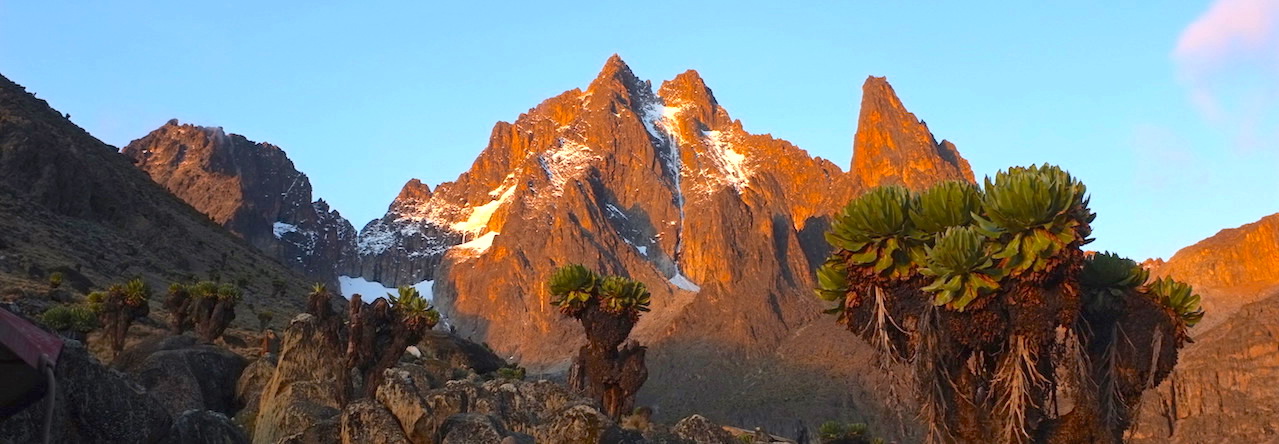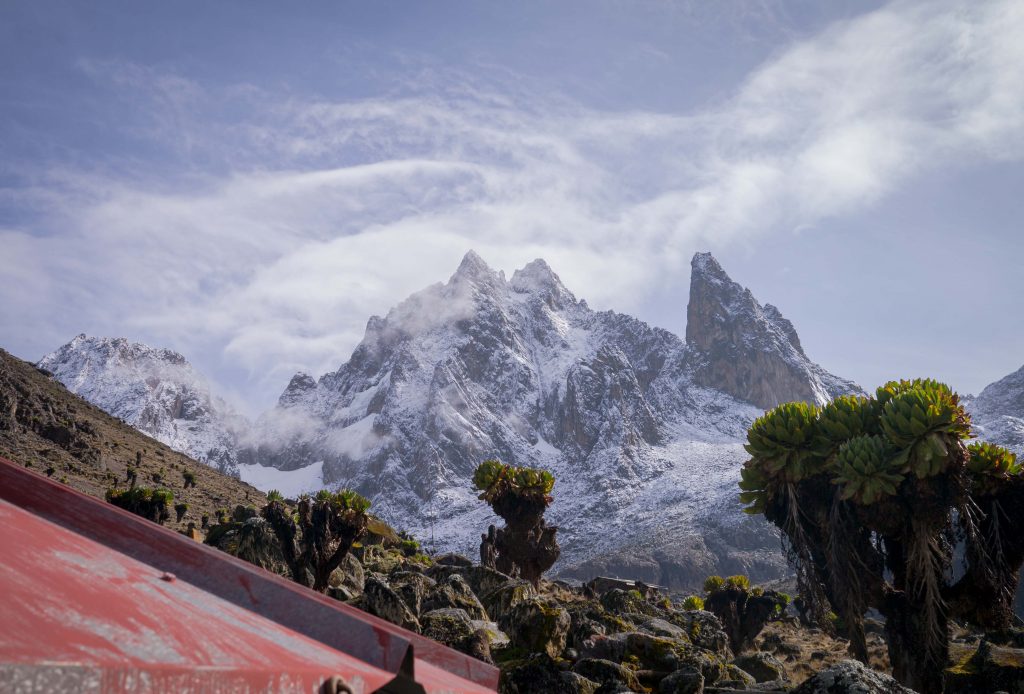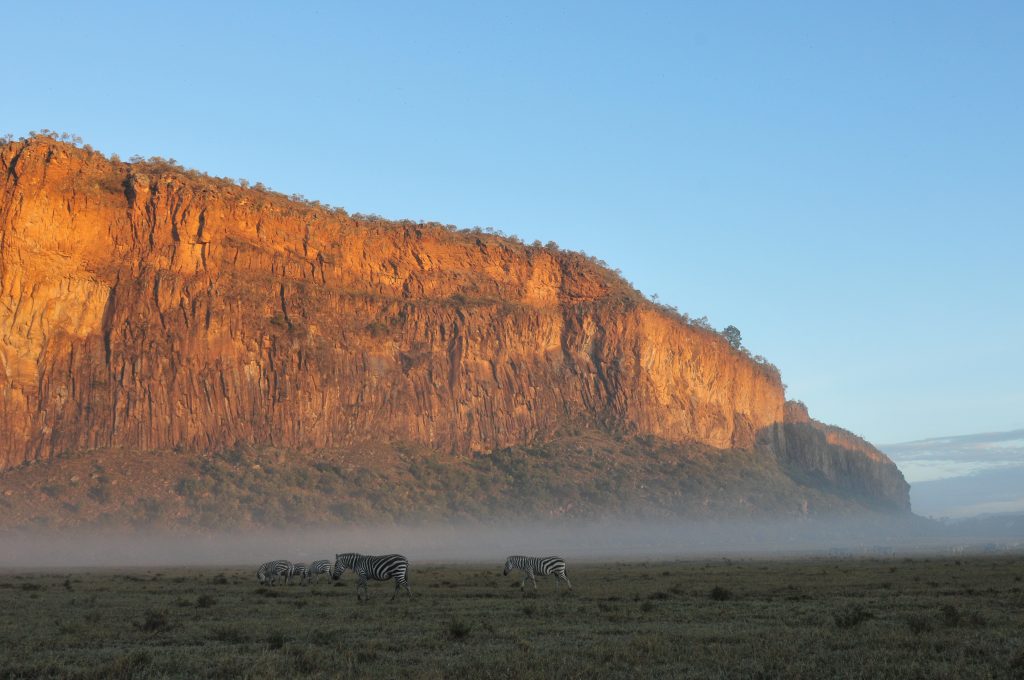Climbing in Kenya has a long history and it is more than 100 years since Halford Mackinder did his amazing first ascent of Batian, the highest summit of Mount Kenya. Over the last 50-60 years, the main actors in Kenya (and East Africa) climbing scene have been local climbers like Eric Shipton, D. Cheesmond, P. Wyn-Harris, R. Tillman, A. Firmin, M. Harris, R. Caulkwell, P Snyder, Ian Howell and Iain Allan.
In addition to them, many other resident and visiting climbers have made a considerable contributions to the long list of excellent routes that exist in the country.
If you’ve never climbed before, Kenya is a great place to start. We’ve devised a guide for newcomers to the rock climbing uncovering the hidden rules of the game. For those with a bit more experience, we’ve devised a list of some of the best routes to get you started. You can also buy rock climbing guidebooks from the MCK on our book order page. Progressively, all routes in Kenya are also being added by the MCK to: https://www.thecrag.com/climbing/kenya.
Areas
While Mount Kenya is certainly a worthwhile destination for alpine climbing; Kenya also offers excellent cragging and even some sport climbing. There are several hundred documented routes within one hour from Nairobi giving residents endless weekends of climbing where you would never dream of having to queue. These crags also provide a good place to warm up before heading up to the peaks of Mount Kenya. Crags further beyond the Nairobi area offer some challenging big wall and bush climbing with several routes waiting to be opened. In all of the climbing areas, you are likely to see much of the big game for which Kenya is famous including giraffe, zebra and a variety of antelopes. If you are lucky you may spot leopard or lion, but then you are far more likely to encounter fresh hyrax faeces on the ledge you thought was going to be a perfect handhold!
The most popular crag in Kenya is certainly Lukenya, located just 45 minutes from Nairobi. The Mountain Club of Kenya owns the land on which most of the cliffs are located, and as such, access is free for members. Arrangements can be made for visitors to get temporary or even daily membership if necessary. Lukenya offers a variety of climbing routes including face climbs, some jamming cracks, and overhangs in difficulty ratings of up to E4 6b (and increasing!). The first route was opened in 1936 when Arthur Firmin put up “Arthur’s Horror” (Severe) but visitors nowadays often do the climbs in the 5b to 5c range located on Main Wall, Upper Cliffs or Edinburgh Castle. Lukenya, with its good-quality routes in all grades, is also an excellent place to provide instruction and the MCK provides a chance for first-time and intermediate climbers to learn something during the Beginners’ and Intermediate Climbing Meets, each offered several times a year. You can find out more about Lukenya in this dedicated page.
Also within an hour from Nairobi, you will find “Frog” Cliffs. Frog has over 100 established single-pitch routes but the best routes are in the higher grades. All the routes are easy to find and are very accessible as they are numbered. Near Frog lie two other crags worth noting: Ndeiya and Embarabal have hundreds of one and two pitch climbs of varying grades. Both require some hiking, particularly Embarabal which is notoriously bushy and difficult to find.
Hell’s Gate, only one and a half hour’s drive from Nairobi, provides some excellent big wall traditional crack climbing. While some of the routes on the vertical Main Wall are only for the most masochistic, “Olympian” (AUS. 18, A1 or AUS. 20) remains one of the classics. It is a well-protected 8-pitch 175m climb. In addition to the walls, there are a number of shorter faces, two small stacks and Fischer’s Tower, a 100 ft. pinnacle, has several exciting routes ranging from 4b to 5b.
Tsavo National Park, an area made famous many years ago for its man-eating lions, has some excellent remote bush climbs that are rarely attempted. Kichwa Tembo and the Elephant Rocks have documented routes ranging from 100 to 300m long. Climbers are encouraged to visit this park but they should contact the MCK about the necessary details, and contact KWS to arrange escort with the Park’s rangers (otherwise they could be eaten by lions!).
There are a number of remote climbing areas with a great deal of untapped potential. For example, the east face of Poi in the Ndoto range in the far north of Kenya has seen only a handful of routes, most notably the original route by A. Wielocowski; “Dark Safari” by P. Littlejohn; the longest bolted line in Africa by T. Skinner and a couple of others. Intense heat, snakes, and thin protection has kept even well-seasoned climbers from reaching the top of the 650m face.
There is still much unexplored rock and this should have a definite appeal to the more adventurous climbers. Bolting is kept to a bare minimum and should be done only with the permission from the Mountain Club of Kenya. This is especially important at Lukenya and the National Park areas. There are scores of excellent well-protected traditional routes and visiting climbers are encouraged to explore these before attempting to drill a new line. Guidebooks for all crags are available at the Mountain Club of Kenya on Tuesday evenings from 8:00pm to 11:00pm.
Interested in rock climbing? Vist ABC of Rock Climbing to find out anything about Rock Climbing



